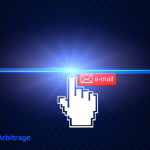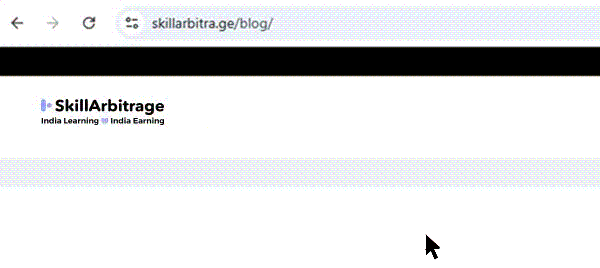This blog is your ultimate guide to writing content that consistently claims Google’s coveted Position Zero. Packed with practical tips and proven strategies, it’s a must-read for content writers, copywriters, and marketers who want their content to outrank the competition, every single time.
Table of Contents
Introduction
“Our blogs are of really good quality, our website is pretty strong, why is our Google ranking so bad?” one of my new clients lamented.
He wasn’t alone. Google ranks remained one of the major seals of authenticity for most brands with online presence, yet content writers do not know a lot about it.
But there is a better way to conquer this seemingly impossible task. In my years of writing conten,t I have found out a hack, a shortcut to good SEO.
Do you want to know what it is?
Two words: Featured snippets.
Featured snippets are short excerpts from web pages that Google displays at the top of search results, often in a box, to provide a direct answer to a user’s query.
You must have noticed these boxes every time you enter a Google search. The marked-out portion is what I am talking about.
According to a recent study 12.29 percent of search queries have featured snippets in the search results and 99.58 percent of the featured snippets are already in the top 10 positions in Google.
And it doesn’t stop there. Google’s “Position Zero” can literally hijack traffic from websites that have spent months climbing to the top of search rankings.
They are Google’s way of satisfying searcher intent instantly, and they represent one of the most valuable pieces of SERP real estate available today.
What makes them even more powerful is that they can catapult a page from position #5 or #10 straight to the top, bypassing traditional ranking factors.
Interested in knowing how to do this?
AI tools like ChatGPT can help you reverse-engineer and create snippet-worthy content in minutes, not hours.
No more guessing what Google wants! You can now analyze existing snippets, understand their structure, and systematically create content that wins Position Zero.
I will give you a proven 5-step system to structure, write, and optimize content for featured snippets using AI tools.
The best part is that you can start this immediately, and you can do it for free.
Step 1: The 4 most popular Google Snippet types
First, let’s understand the types of snippets available.
Google displays four main types of featured snippets, each serving different search intents and requiring specific formatting approaches.
1. Paragraph snippets
These are the most common, appearing for definition-based queries and direct questions.
These typically contain 40-50 words of clear, concise information that directly answers the searcher’s question. They work best for “what is,” “who is,” and “why” queries.
2. List snippets
List snippets appear for instructional content and rankings, displaying either numbered or bulleted lists.
These are perfect for how-to guides, step-by-step processes, and “best of” compilations.
Google loves queries starting with “how to,” “ways to,” and numerical modifiers like “5 tips” or “10 steps.”
3. Table snippets
Table snippets showcase structured data comparisons, featuring organized rows and columns of information.
They are ideal for pricing comparisons, feature breakdowns, and any content involving multiple data points that need side-by-side evaluation.
4. Video snippets
Video snippets combine visual content with text, though our focus remains on optimizing the text components that help videos win these positions.
These typically appear for tutorial-based queries where visual demonstration adds value. Here’s a visual to represent the approximate usage and popularity of the different snippet types demonstrated above.
As you can see, paragraphs and list snippets are the ones that are used most.
Here’s a quick recap:
Choosing the right snippet type depends on your content goals and search intent.
Explaining a concept?
Go with paragraphs.
Teaching a process?
Lists work best.
Comparing options?
Tables are your friend.
The key is matching your format to what users actually want when they search.
Understanding search intent behind different query types will guide your snippet strategy. Informational queries typically trigger paragraph snippets, while transactional or instructional queries favor lists and tables.
Step 2: Reverse engineer snippets for super effective SEO
The fastest way to win featured snippets isn’t guessing, it’s systematically analyzing what’s already working and improving upon it. This three-step reverse engineering process using AI will give you a competitive advantage.
1. Identify ranking snippets using multiple research methods.
Start with direct Google searches for your target keywords, paying special attention to the “People Also Ask” section, which often reveals additional snippet opportunities.
Use the “site:” operator to see if competitors are winning snippets in your niche (e.g., “site:competitor.com [your keyword]”). This reveals gaps you can exploit.
Don’t limit yourself to obvious searches. Explore related queries, question variations, and long-tail keywords in your space.
The goal is to build a comprehensive list of snippet opportunities that align with your content strategy.
2. Use ChatGPT to analyze snippet structure and patterns.
Once you’ve identified winning snippets, feed them into AI for detailed analysis.
Use prompts like: “Analyze the structure, tone, and keyword usage in this featured snippet: [paste snippet text]. What makes it effective for Google’s algorithm?”
This analysis reveals patterns you might miss manually. Like:
- Specific word counts
- Question-answer formats
- Transitional phrases
- Keyword placement strategies.
AI can identify why certain snippets win over others, giving you a blueprint for optimization.
3: Stack prompts to rebuild snippet-style answers for your own content.
After understanding what works, use AI to create variations.
Try prompts like: “Write a 40-word answer for ‘What is a content calendar?’ using the same structure as this winning snippet: [example].”
Then make it more specific: “Make it more actionable,” or “Add a specific benefit.”
This stacking approach lets you rapidly test different angles, tones, and formats until you find the perfect combination.
You are not copying, you are hacking successful patterns and applying them to your unique content.
Free tools like Google Search Console provide additional insights into which of your existing pages are close to winning snippets. Look for keywords ranking in positions 2-10 with high impressions but low clicks; these are prime candidates for snippet optimization.
The key to this reverse engineering process is volume and iteration. Don’t stop at analyzing one snippet; examine 10-15 in your niche to identify consistent patterns and opportunities.
Step 3: Write snippet-worthy content with AI
Creating content that wins featured snippets requires specific formatting techniques and strategic AI prompting.
The difference between regular content and snippet-worthy content lies in structure, conciseness, and direct value delivery.
Here’s how to nail snippet-worthy content every time. Keep these things in mind:
1. Conciseness
Paragraph snippets perform best under 50 words, so every word must earn its place.
Strip out filler phrases like “it’s important to note” or “as we discussed earlier.” Get straight to the answer users want.
2. Exact-match keywords
Use exact-match keywords in both your questions and answers. If the search query is “what is content marketing,” ensure your answer includes this exact phrase naturally. Google’s algorithm favors precise matches for snippet selection.
3. Structure
For list-based content, structure is everything. Use H2 headings for main points, followed by numbered bullets for sub-points.
This hierarchy helps Google understand your content organization and increases snippet probability. Each list item should be actionable and specific rather than vague or theoretical.
4. Formatting
Table creation requires consistent formatting with clear headings and uniform row structures. Ensure your data is accurate, current, and adds genuine value to the comparison. Inconsistent or incomplete tables rarely win snippets.
5. Niche-specific prompting examples
Niche-specific prompting examples help you create targeted content quickly:
For EdTech content, try: “Define [term] in 40 words for UPSC aspirants, focusing on practical application.”
This creates snippet-worthy definitions with your audience’s specific needs in mind.
SaaS companies can use: “List 5 benefits of [tool] in a numbered format, each under 15 words, focusing on ROI and efficiency.”
This generates concise, benefit-focused lists that convert browsers into trials.
Health and wellness content benefits from: “Write 5 ways to reduce stress in a bulleted list, each including a specific action and timeframe.”
The specificity makes content more valuable and snippet-worthy.
Finance organizations can use prompts like “Compare 3 investment plans in a table format, including risk level, minimum investment, and expected returns.”
Create structured comparisons that Google loves to feature.
Avoiding fluff is crucial for snippet success.
Skip traditional blog intros that build context; users searching for snippets want immediate answers.
Start with the solution, then provide supporting details if needed.
Instead of: “Content marketing has become increasingly important in today’s digital landscape. Many businesses struggle to understand what it actually means…”
Try: “Content marketing is creating and distributing valuable content to attract and retain customers, ultimately driving profitable customer action.”
This direct approach mirrors how people actually search and how Google prefers to display information in snippets.
AI excels at maintaining this concise, direct tone while ensuring your content remains valuable and comprehensive.
Use follow-up prompts to expand on successful snippets when creating longer-form content around them.
Step 4: Refine and update content
Winning featured snippets isn’t a one-time effort; it requires ongoing optimization and strategic updates to existing content.
This systematic approach to refinement can transform underperforming pages into goldmines of snippets.
1. Use AI to audit existing content for snippet opportunities
Upload blog posts to ChatGPT with prompts like: “Scan this content for potential featured snippet opportunities. Identify questions that could be answered more directly and suggest snippet-style reformats: [paste content].”
This audit reveals hidden opportunities in content you’ve already created.
Often, you’re already answering valuable questions but not in snippet-friendly formats. AI can identify these gaps and suggest specific improvements.
2. Insert snippet-style blocks
Create dedicated sections like “Quick Answer,” “Key Takeaway,” or “At a Glance” that provide direct, concise responses to common questions.
These blocks serve dual purposes, improving user experience and increasing snippet probability.
For example, if you have a 2,000-word guide on email marketing, add a “Quick Answer” box at the beginning.
Use this prompt: “Email marketing is sending targeted messages to subscribers to build relationships and drive sales, with an average ROI of $42 for every $1 spent.”
3. Test multiple variations
Create 3-4 different versions of the same snippet-style answer, varying tone, length, and keyword placement.
Use prompts like: “Rewrite this snippet answer in a more conversational tone,” or “Make this more technical for B2B audiences.”
4. Track performance through Google Search Console
Use the Google Search Console to monitor impression and click changes for targeted keywords.
This data-driven approach removes guesswork from optimization decisions.
5. Strategic content updates
Focus on pages already ranking in positions 2-10 for relevant keywords.
These pages have authority but need formatting improvements to win Position Zero. Add snippet-worthy sections, improve header structure, and ensure direct question-answer formats appear early in the content.
6. Consider seasonal and trending updates
Google favors fresh, current information, so regular updates following current trends signal content quality and relevance.
The refinement process should be systematic rather than random. Focus on high-traffic pages first, then expand to supporting content that could win related snippet opportunities.
Step 5: Your snippet toolkit (along with AI)
Combining AI capabilities with free SEO tools creates a powerful system for identifying, creating, and monitoring featured snippet opportunities.
These tools provide the data foundation that makes AI prompting more strategic and effective.
1. Google Search Console
This serves as your primary intelligence source for snippet opportunities.
Navigate to the performance report and filter for queries ranking in positions 2-10 with high impressions but relatively low clicks.
These keywords represent prime snippet targets, you are already visible but not capturing the top position.
Use the query data to inform your AI prompts.
Instead of generic requests, create specific prompts based on actual search terms your audience uses. This alignment between search behavior and content creation dramatically improves snippet win rates.
2. AnswerThePublic
Generates question-based content ideas that naturally align with snippet formats.
Export the question lists and use them as AI prompts for snippet creation. Questions starting with “what,” “how,” “why,” and “when” typically trigger snippet displays.
Combine AnswerThePublic data with AI by using prompts like: “Create a 45-word answer for ‘[specific question from AnswerThePublic]’ that would work as a featured snippet.” This approach ensures you’re targeting real search queries rather than assumed interests.
3. Keywords Everywhere
This browser extension provides search volume and keyword difficulty data directly in Google search results.
Use this context to prioritize which snippet opportunities deserve immediate attention versus long-term development.
When researching existing snippets, Keywords Everywhere shows related keywords and questions that could expand your snippet strategy.
This competitive intelligence helps identify content gaps your competitors haven’t addressed.
4. People Also Ask
These boxes offer endless content inspiration and snippet opportunities. These questions represent verified search demand and often trigger their own snippet displays.
Screenshot these questions and use them as direct AI prompts for content creation.
Stack multiple “People Also Ask” questions into comprehensive content pieces.
Create pillar pages that address 5-7 related questions, each with its own snippet-optimized section.
Combining these tools with ChatGPT creates rapid content iteration cycles.
Use Google Search Console to identify opportunities, AnswerThePublic to find related questions, and Keywords Everywhere to understand search volume.then feed everything into AI for instant content creation.
5. AI Tools
In addition to ChatGPT, tools like Grok (available for free on x.ai with limited quotas) and Google Bard can supercharge your snippet optimization.
Grok excels at analyzing search intent and generating concise, snippet-friendly answers, while Bard offers insights into trending queries and content gaps.
Use Grok for prompts like, “Suggest a 40-word snippet for ‘What is content marketing?’” or Bard for, “Identify related questions for [keyword].”
Both these tools integrate seamlessly with free SEO tools, enabling faster content iteration and precise targeting of Position Zero opportunities.
This systematic approach eliminates the traditional content research bottleneck.
Instead of spending hours researching and writing, you can identify opportunities and create optimized content in minutes.
Pro Tip: The key to tool integration is workflow consistency. Establish a weekly routine: identify opportunities on Monday, create content Tuesday-Wednesday, publish on Thursday, and monitor results on Friday.
This rhythm ensures continuous improvement and snippet wins.
Conclusion
Featured snippets represent one of the highest-ROI SEO tactics available today, requiring minimal effort compared to traditional ranking strategies.
Instead of competing against dozens of established pages for position #1, you can leapfrog the competition by creating content specifically designed for Position Zero.
The AI-powered approach outlined in this guide transforms snippet optimization from guesswork into a systematic, repeatable process.
By reverse engineering successful snippets, creating targeted content with AI assistance, and continuously refining your approach with free tools, you’re building a sustainable competitive advantage.
The most successful content creators treat snippet optimization as a weekly habit rather than a one-time project. Commit to creating 2-3 snippet-optimized content blocks each week using the AI prompts and strategies covered here.
This consistent effort compounds quickly, building a portfolio of Position Zero wins that drive significant organic traffic.
Remember that featured snippets are about serving user intent perfectly and immediately. When you focus on providing genuine value in the most accessible format possible, both Google’s algorithm and your audience will reward you with visibility and engagement.
Start small.
Choose one underperforming piece of content from your existing library, apply the reverse engineering process to identify snippet opportunities, and use AI to create optimized sections.
Track the results, iterate based on performance, and scale the approach across your content portfolio.
The opportunity is clear, the tools are available, and the process is proven. Your only remaining decision is how quickly you want to start dominating Google’s most valuable search position.
FAQ
What is Position Zero, and why should content writers care?
Position Zero is the featured snippet that appears above all search results on Google. For content writers, it’s the fastest way to make your blog the first thing people read. It’s proof your writing isn’t just good—it’s Google’s top pick.
What kind of writing gets picked for Position Zero?
Google loves clarity. Short, direct answers to specific questions win. Think definitions, how-to steps, bullet lists, and quick comparisons. If your content answers a question in under 50 words and adds value after, you’re in the running.
How do I structure my content to win featured snippets?
Start with a direct answer in the first paragraph. Use H2s for questions, follow up with bulleted or numbered lists, and keep paragraphs short (2–3 lines). The goal? Make Google’s job easy by making your content scannable and snippet-ready.
Do I need to be an SEO expert to write for Position Zero?
Nope. You just need to think like Google. If your writing clearly answers a real user question and uses basic SEO best practices (like keyword intent and clean formatting), you’re already halfway there. The rest is practice and polish.
How do I know what to write to target Position Zero?
Use Google itself. Type your topic and check if a featured snippet shows up. Tools like AlsoAsked or AnswerThePublic reveal questions people are asking. Write clear, compelling answers to those questions—and you’re speaking Google’s language.
Will adding Position Zero formatting ruin my natural writing flow?
Not at all. It sharpens it. Learning to answer clearly in a sentence or two forces clarity and intent. Think of snippet-writing like writing a killer hook—it draws readers in, then lets your storytelling or insight do the rest.
How can I show clients that my content ranks in Position Zero?
Track it using Google Search Console or tools like Ahrefs and SEMrush. Take screenshots of your content in the featured snippet. Clients love proof, and Position Zero is the ultimate brag. It tells them: this writer gets results.
!







 Allow notifications
Allow notifications
